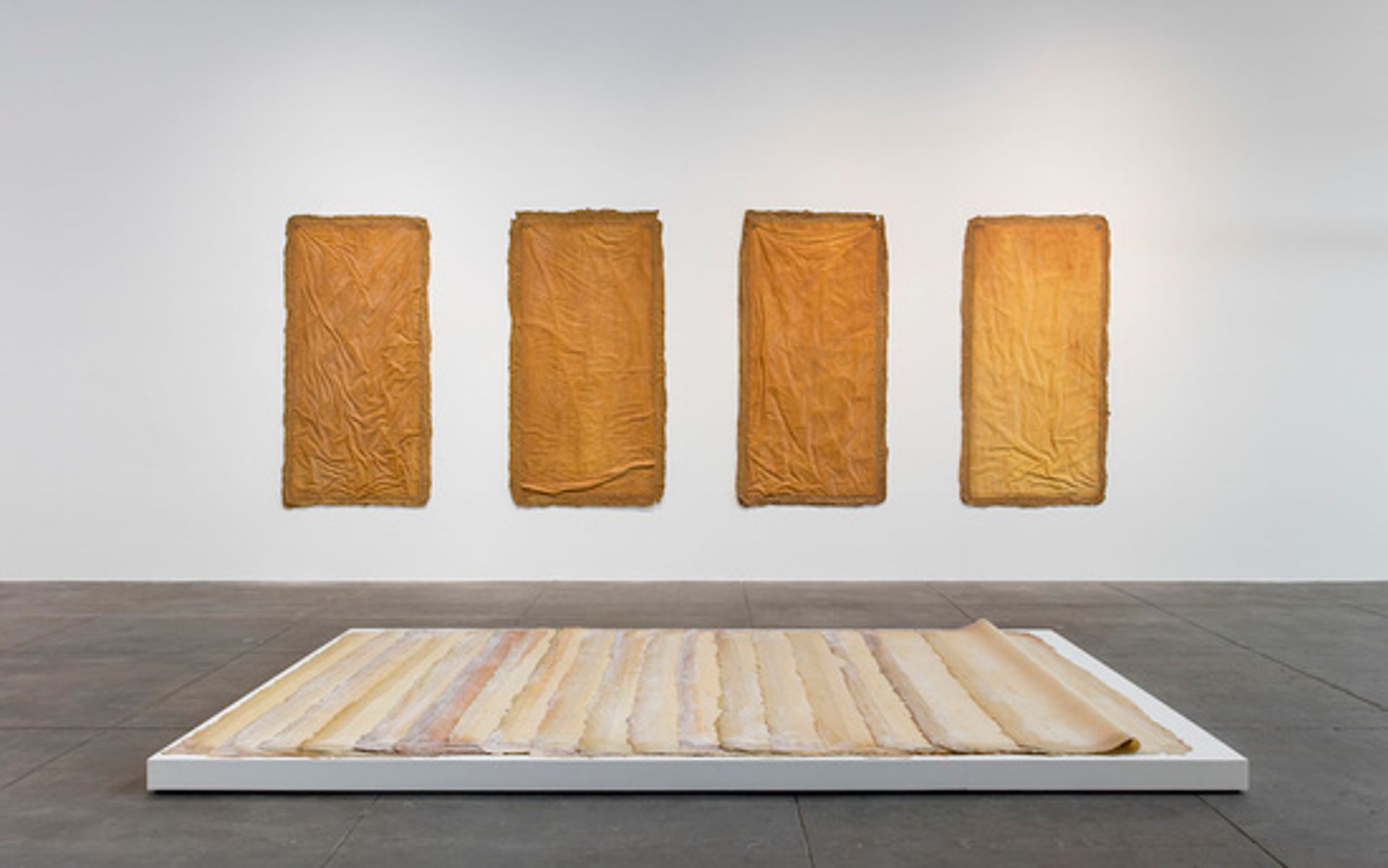Big numbers kept coming up during the Thursday press preview for the show “Revolution in the Making, Abstract Sculpture by Women, 1947-2016,” which kicked off the much-anticipated opening week activities of the new space Hauser Wirth & Schimmel in downtown Los Angeles.
The gallery, as everyone knows by now, occupies over 100,000 sq. ft. The inaugural show, according to co-curators Jenni Sorkin and Paul Schimmel, contains about 100 works of art.
But my experience of the new show and space had nothing to do with size and everything to do with scale. Officially opening to the public on 13 March, the space consists of an elegant 1917 bank building fronting East 3rd Street and a cluster of more traditional white-cube galleries along East 2nd street, with a small bookstore (now open), restaurant (coming this summer) and garden area (coming this fall), all leading to an expansive, open-air central courtyard.
The complex might sound daunting, but it has been carved up in a way that does not seem disorienting or oppressively large. Likewise, the first exhibition, up through 4 September, features sculpture that looks handmade and feels profoundly human-scaled.
It traces the evolution of abstract sculpture from the psychologically loaded post-war creations of artists Louise Bourgeois, Ruth Asawa and Lee Bontecou to the recent sculptural deconstructions by artists like Kaari Upson and Abigail DeVille. Along the way you encounter beautifully textured—sometimes exquisitely rough—works by Mira Schendel, Sheila Hicks and Michelle Stuart that make a case for the craft-based roots of contemporary sculpture, whether in ceramics, weaving or bookmaking.

“I think it really shows Louise Bourgeois to be the big cheese,” said Iwan Wirth at the opening. “I think Ruth Asawa looks stronger than ever,” I offered.
By not including men in the survey, the show effectively counters the idea of the modern sculptor as welder, a la David Smith and Mark di Suvero, or as mega-fabricator like Jeff Koons and Anish Kapoor today. There are no towering I-beams or mirror-finish stainless steel baubles. I didn't miss them.
I did miss something else. By taking abstract sculpture as its premise, the show does not fully follow the historic swerve of feminist art towards representing the body—lumpy, pretty, ugly, or even bloody, anything but abstract. The show is more contemplative and less provocative, despite its revolutionary title, as a result.

